As of this posting, they will have drilled a hole and removed something from my main line! But as of now (days before) I am still behind the stove, manning the fires, folding the dough, making the stocks! Chefs never stop. We're burdened by ideas, insecurity and probably too much drink or something. You can't stop cooking, baking or doing what you love just cause your sinuses are backed up. Right? Gotta deal! What better time then now to try a new product?
So I have this wonderful sister who happens to be a great baker herself. Whenever possible she sends me sacks of Swiss flour. Recently she tried sending some, but it seems our regulatory system won't let it come through. What a drag! My sister's last care package contained a product that always has interested me; backferment from Sekowa. "Sekowa Spezial Backferment" is a dry and fine granulate made from high-grade honey, biologically grown peas and wheat. It's not technically a sourdough,If someone knows other elements, please tell me! I am still investigating what it is myself but haven't much via Google. The product is widely used in bakeries and households in Germany and Switzerland.It's origins have sort of health nut hippie roots, according to my forum friend Carla in New Zealand; pointing to a Rudolf Steiner connection, kind of a cultist culture (pun intended), born from his ideas on bio dynamic farming.
While visiting my sister on my last trip to Switzerland, I tried to cultivate this stuff into a levain,with no success. I made the mistake of assuming it was dry sourdough and fed it a regimen of 1.1.1 like I was doing at home. So when I received this last batch it sat around for a long while until I was in between feedings of my wheat levain, scratched my head and ripped open the seal.
An alum of Bethesdabakin, Brad Prezant and Nina Holm Jensen both left some answers to several queries regarding this product on Dan Lepards site and Brad kindly sent me some notes from his own bread seminar in France last year.
This recent project of mine was as follows; The first dough was a combination of spelt and rye fed from my initial starter, which had wheat and rye, and the other I combined backferment to make a sourdough recipe,(It worked!), which I adapted from Bread Matters,by Andrew Whitley.

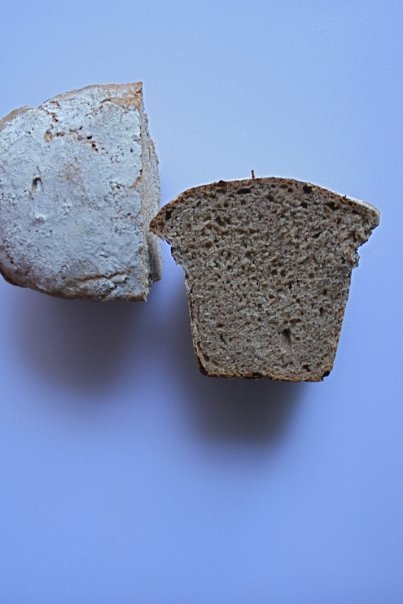
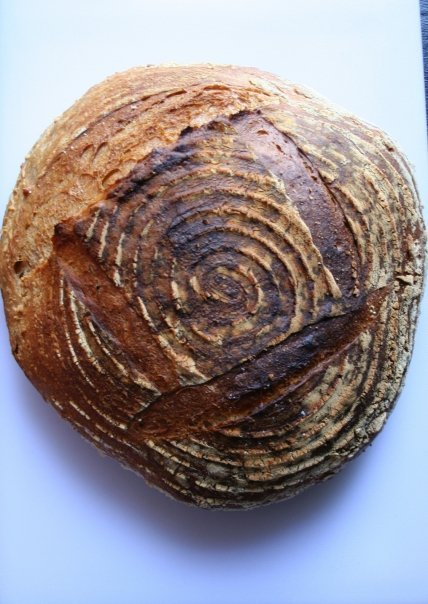
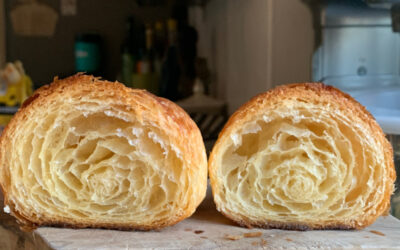
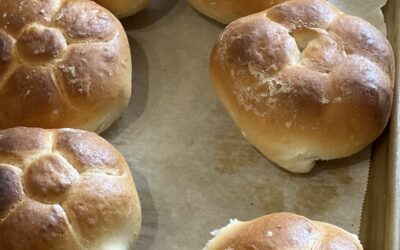

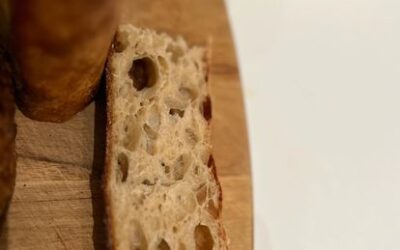
I have used Sekowa Spezial Backferment many times with excellent results. Each 250g carton comes with detailed instructions – in German, but I can summarise the correct use of Backferment as follows:
1. First you make a 2 stage pre-ferment using 20g dry Backferment, 100g white flour, 100g wholemeal (wheat or spelt) and 220g of water at 40 degrees c. Mix well, cover well, leave for 12-18 hours in a warm place.
2. Make sure the ferment is bubbling. Then mix in a further 150g of each flour and 70-100g water at 40 degrees c. Leave for a further 8 hours, well covered, in a warm place.
3. This is now a batch of nicely bubbling Backferment starter which you can keep in the fridge for about 4 months tightly covered.
4. To make bread. Take 10g of your new Backferment starter and 5g dry Backferment and mix well with 300-400g of water at 40 degrees c. Mix in 300 – 400g white bread flour and leave well covered in a warm place overnight, 12 hours minimum.
5.Final Build: Mix in 600-700g wheat bread flour,10-18g salt, 500g (give or take) of water at 40 degrees – this has to be left to judgement but for 1000g total flour reckon on 650-850g total water. Mix well.
6. Knead. Allow to rise about 1 hour in a warm place. Work the dough gently, -a few folds?-, then place in a proofing basket for about one hour – Let the dough fall back a little. Bake for around 1 hour at 220c. Romertopf clay bakers work very well.
Backferment is very reliable and makes a slightly different taste than a traditional sourdough or commercial yeast, especially in spelt breads.
It really needs to work at a warm temperature in step 1 (maybe 30 degrees or close to 90 deg. F.) It is not necessary to add new backferment (step 4., the 5 g. addition) once the starter is made [ maybe this is a strategy to sell lots of backferment?). We simply elaborated the starter paste stored in the fridge (end of stage 2, although we only left it a week in the fridge) according to the following:
Backferment starter
Stage 1
o 20g backferment granules
o 220g water
o 100g wholewheat flour
o 100g white flour
Leave for 12-18 hours @ 28-30o C
Stage 2
o All the starter from Stage 1
o 80g water
o 150g wholewheat flour
o 130g white flour
Leave for 5-7 hours @ 28-30o C
Stage 3
o 100g Backferment from Stage 2
o 1kg flour
o 1kg water
Leave for 12-16 hours @≥25 deg C to make production backferment. This is then used as a poolish would be to provide leavening in the final mix, for example, in a full wholegrain bread, at a bakers percentage of 55%-60% of the flour, and additional water at 50% (makes a pretty wet dough at a final % of 78%, need to use boxes to support the dough). I loved the taste of this bread, it was different than anything I had ever eaten.
Sekowa sent me the following once:
Preparation of the Starter-Dough
made from Special-Baking-Ferment
If someone wants to bake with the Special-Baking-Ferment, the Basic-Starter-Dough must already be prepared.
The Basic-Starter-Dough is a fermenting dough which is prepared from the granulated “Special-Baking-Ferment” mix.
One can either obtain the Basic-Starter-Dough ready made or prepare it oneself.
To make the Basic-Starter-Dough one uses a tall narrow glass container (1/2 gal = 2-3 l) which can be covered with a lid, plate or piece of foil, so that the dough’s surface does not dry out. A cloth as cover is not sufficient. A moderate, neutral Starter- Dough suitable for all kinds of baked goods can be made using the following recipe:
1. stage:
1 tablespoon, heaping (= 2/3 oz = 20 g) Special-Baking-Ferment dissolved in
6 oz warm water (= 220 ccm) mix well, no lumps!
3 oz (= 100 g) wheat meal, medium coarse (wole grain)
3 oz (= 100 g) wheat fleur (white flour)
Mix well! The dough should be rather supple, but no water should remain standing. Let this dough stand for 12-18 hours well covered with an optimum temperature of 86°F (= 30°C).
With this temperature results are always favourable. Experience has shown that sometimes difficulties arise with low temperature.
When this dough has stood for the required time, then one will be able to observe bubbles rising out of it.
2. stage:
At this point the following should be added:
2 – 3 oz (= 70-100 ccm) water, temperatur is 104°F (=40°C). Mix the water with the dough. More or less water depending on the desired consistency of the Starter-Dough. Then add the following mixture:
5 oz (= 150 g) wheat meal, medium coarse (whole grain)
5 oz (= 150 g) wheat flour (white flour)
Mix well! The consistency of the dough is now less supple than before.
Let stand for another 5-10 hours, during which the optimum temperature is again 86°F (=30°C). After 10 hours, even after 5 hours under favourable conditions, the dough has increased its volume about twice as much and is ready for use. A later decrease of the volume of the starter-dough dose not lessen its quality. The fermentation of the second stage must be conclusive enough that no question arises as to its completion. The quality of the starter-dough is decisive for the final result. The starter will keep for several months in a jar (only ¾ filled) with a screw lid in the refrigerator where it is always ready for baking.
If after a lengthy storage in the fridge a grey colouring appears on the surface of the starter-dough, one must not worry, it is only a characteristic yeast. If water seperates off ist should be poured out.
Preparation of the Pre-Mix:
The Pre-Mix is a preparatory dough, which should be prepared if possible in the afternoon or evening and must sit for at least 12 hours. The following is needed:
1/3 oz (= 10 g) starter dough, i.e. heaped tablespoon, not less. Greater quantities are not
harmful, only accelerate the fermentation.
1 teaspoon (= 3 g) Special Baking-Ferment (granulate)
10-13 oz (= 300 – 400 g) meal or flour or a mixture of both
½ – ¾ pint (= 300 – 400 g) water, lukewarm (appr. 86°F or 30°C)
Dissolve the starter dough (for preparation of starter dough see special instructions) and the Special Baking-Ferment in a small portion of the measured water, so that it is mixed without any lumps. Then add the remaining water and the meal or flour or their mixture and mix it well. If 10 oz (=300 g) of meal, flour or mixture is used, the bread will be especially mild. Let the pre-mix stand over night in a well covered, large enough bowl at 86°F (= 30°C). The dough must remain undisturbed for at least 12 hours. There is no harm when remaining longer. In this case one must expect a higher acidity. After at least 12 hours, the dough be fermenting vigorously and should be matured. The “maturity” of the dough showa istself, when the dough no longer rises, but already begins to fall. If the surface of the dough is only slightly slit, bubbles of the fermentation will be seen.
Preparation of the Main Dough: Add the following to the pre-mix:
20 or 23 oz (= 600 or 700 g) meal or flour or mixture
2 tablespoon (= 18 g) salt dissolves in some water, poured over
½ – ¾ pint (=350 – 500 ccm) water, very warm (About 130°F = 55°C)
The amount of water is determined by the type of flour or meal one uses, but should be enough to give a pliant, supple consistency.
Knead the dough well, cover it properly, and put it in a warm place, for example in the oven warmed with a lampe with a 25-watt-light-bulb, so you get a temperature for about 27-30°C.
After 30 – 50 minutes a good leavening of the dough should become visible. Now the risen dough is divides, lightly worked and formed and put into greased pans.
Let the dough stand again for 30 – 50 minutes in the pans in a warm place, well covered. The surface must not become dry! The fermentation time is finished when the dough is no longer round but slightly flattened. On the surface of the dough from meal small cracks occur from the small fermentation bubbles.
Breads with insufficient fermentation tend to split ant those with the proper fermentation tend to be slightly raised in the center. When the dough has fermented too long, it will fall.
Baking:
Bake at 428°F (=220°C) for about 1 hour, depending on the size of the loaf.
It is helpful to have a dish of boiling water in the oven.